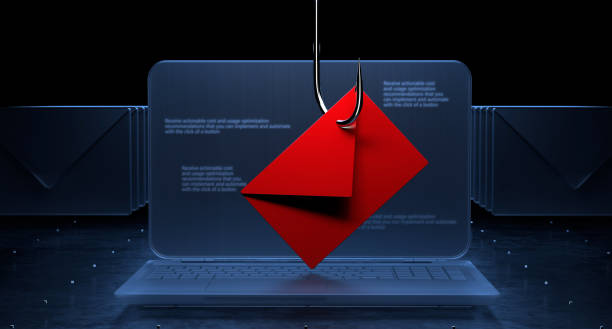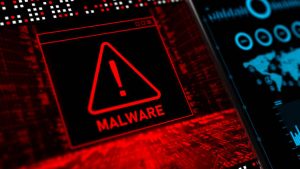In today’s digital age, phishing scams are one of the most prevalent threats to your online safety. Hackers use these deceptive tactics to trick you into revealing personal information, such as passwords, credit card numbers, and other sensitive data. These scams typically arrive in your inbox disguised as legitimate communications, making them difficult to spot without knowing what to look for. In this article, we’ll break down how to identify phishing scams and provide practical steps to avoid falling victim to these malicious attacks.
What is Phishing?
Phishing is a type of cyberattack where malicious individuals send fraudulent emails that appear to be from reputable sources. The goal is to deceive recipients into providing sensitive information or clicking on links that download malware. While traditional phishing is widespread, variations like spear phishing (targeted phishing aimed at specific individuals or organizations) and whaling (targeting high-profile individuals like executives) are becoming increasingly common.
Common Goals of Phishing Attacks:
- Steal Personal Information: Gaining access to usernames, passwords, or financial data.
- Distribute Malware: Embedding links or attachments that, when clicked, download harmful software.
- Impersonate Legitimate Entities: Convincing victims to act on fraudulent requests, such as wiring money or changing account credentials.
How to Identify Phishing Emails: 10 Red Flags to Watch For
Recognizing phishing emails can be challenging because scammers often put a lot of effort into making their messages look genuine. However, there are common signs that can help you identify phishing attempts:
1. Suspicious Sender’s Email Address
Carefully inspect the sender’s email address. Phishing emails often come from addresses that are similar to legitimate ones but may have slight misspellings or extra characters. For example, an email from “micros0ft-support.com” instead of “microsoft.com” is a clear sign of a scam.
Tip: If the email claims to be from a trusted organization, such as your bank or a known company, cross-check the sender’s domain by visiting their official website directly.
2. Urgent or Threatening Language
Phishing emails often create a sense of urgency or fear. Phrases like “Your account will be suspended!” or “Immediate action required!” are common tactics used to pressure recipients into acting quickly without thinking.
Tip: Legitimate companies rarely use such alarming language in their communications. Always pause and verify the message before taking any action.
3. Generic Greetings and Lack of Personalization
Phishing emails are often sent in bulk, using generic greetings such as “Dear Customer” or “Dear User.” A legitimate company will typically address you by your name if they have a relationship with you.
Tip: Be cautious of emails that don’t use your name or any personal details, especially if they are asking for sensitive information.
4. Grammar and Spelling Mistakes
Phishing emails frequently contain poor grammar, spelling errors, or awkward sentence structure. While these mistakes might seem trivial, they are a key indicator of a scam, as professional organizations are unlikely to send out error-ridden emails.
Tip: If the email is full of typos and doesn’t read professionally, it’s a red flag.
5. Mismatched or Fake URLs
Hover over any links in the email (without clicking) to see the actual URL. If the link address doesn’t match the text or leads to a suspicious site, it’s likely a phishing attempt.
Tip: Always type the official URL of the website directly into your browser instead of clicking on any links.
6. Unexpected Attachments
Phishing emails often contain attachments labeled as invoices, documents, or other seemingly important files. Opening these can trigger malware downloads that compromise your system.
Tip: Avoid opening attachments from unknown senders. If the email claims to be from someone you know, verify by contacting them through a separate, trusted channel.
7. Unusual Requests
Legitimate companies will never ask for sensitive information such as your social security number, login credentials, or financial details via email. Be wary of emails requesting personal information or asking you to change account details.
Tip: Call the company using a phone number from their official website to verify the request before responding.
8. Too-Good-to-Be-True Offers
Emails that promise large sums of money, prizes, or lucrative business opportunities are often scams. If it sounds too good to be true, it probably is.
Tip: Don’t respond or click on links in emails that make unrealistic offers. Report these messages as spam.
9. Suspicious Attachments or Files with Odd Extensions
Be cautious of attachments with file extensions like .exe, .zip, .scr, or .js. These are commonly used to distribute malware.
Tip: Never download or open attachments unless you’re absolutely certain of their legitimacy.
10. Request to Enable Macros or Install Software
If an email asks you to enable macros or install a particular software to view content, it’s highly likely to be malicious. Macros can automate tasks in Office files but are often used to execute harmful code.
Tip: Avoid enabling macros or installing unknown software unless you’re 100% sure of its authenticity.
How to Protect Yourself from Phishing Scams
While identifying phishing emails is important, preventing these attacks is equally critical. Here are actionable steps to protect yourself from falling victim to phishing:
1. Enable Multi-Factor Authentication (MFA)
MFA adds an extra layer of security by requiring a second form of verification, such as a code sent to your phone, in addition to your password. This makes it much harder for hackers to access your accounts even if they have your login credentials.
2. Install Anti-Phishing Browser Extensions
Many browsers offer anti-phishing extensions that warn you if you’re about to visit a potentially dangerous site. Consider using these to bolster your online defenses.
3. Use Spam Filters
Spam filters in your email service can help detect and block suspicious emails before they reach your inbox. Make sure your spam filter is enabled and configure it to its highest security settings.
4. Educate Yourself and Your Family
Awareness is your first line of defense. Regularly update yourself on the latest phishing tactics and share this information with family members, especially children and elderly relatives who may be more vulnerable.
5. Report Phishing Emails
Most email services have a “Report Phishing” option. Use it to help your provider improve its filtering system and protect others.
What to Do If You Suspect a Phishing Attempt
If you think you’ve received a phishing email, here’s what you should do:
- Do Not Click on any links or download attachments.
- Do Not Respond to the email or provide any information.
- Report the Email to your email provider or the organization being impersonated.
- Delete the Email from your inbox and your trash folder.
- If you’ve already clicked a link or entered information, immediately change your passwords and enable multi-factor authentication.
Stay Safe and Stay Vigilant
Phishing scams are becoming increasingly sophisticated, but by staying vigilant and following the tips outlined in this guide, you can greatly reduce your risk of falling victim to these malicious attacks. Remember, when in doubt, always verify the authenticity of any suspicious email through a separate, trusted communication channel.
For more personalized security solutions and expert advice on protecting your digital life, contact Techie Kumar. Our team of cybersecurity professionals is here to help you navigate today’s complex cyber threats and keep your information safe.

